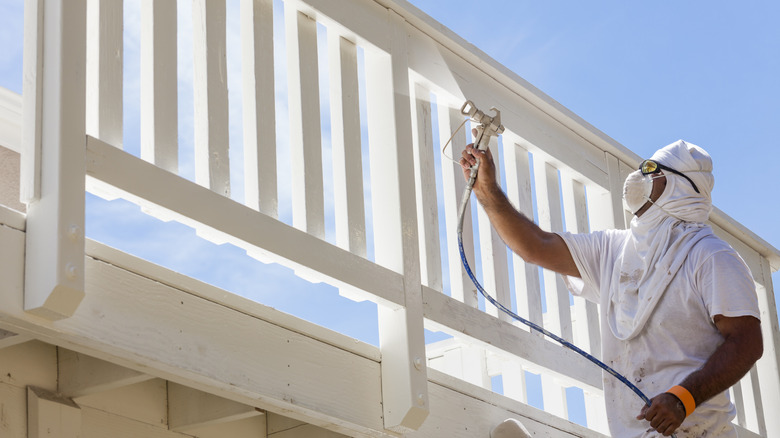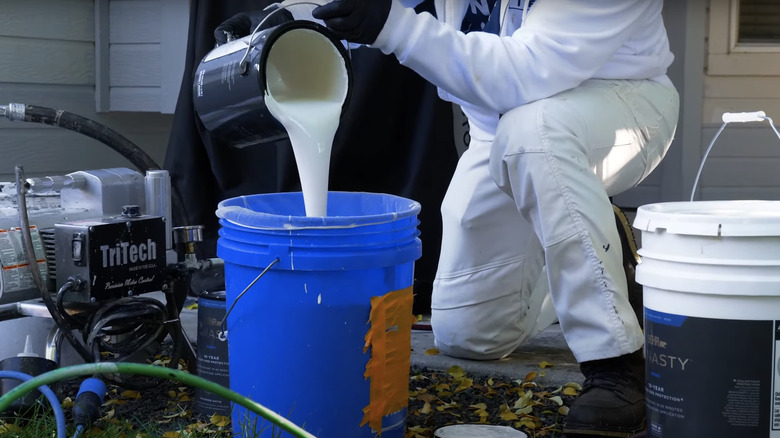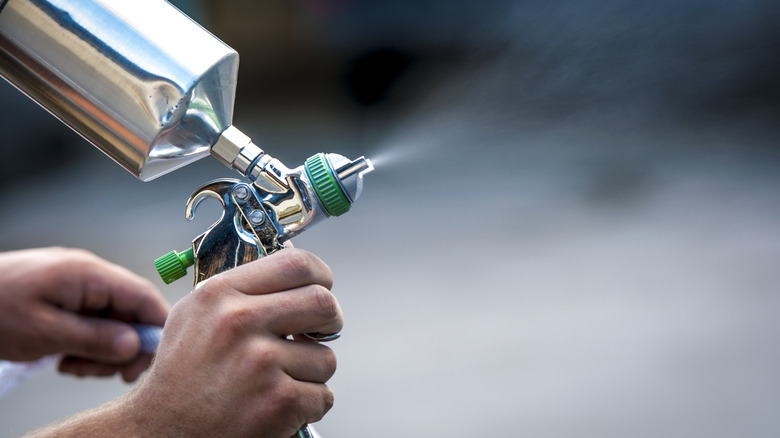Avoid A Clogged Paint Sprayer With One Easy Preparation Step
While using a paint sprayer can be an easier and quicker way to complete a big painting job and could help you paint your home like a professional, you'll need to ensure that you're correctly preparing your paint; otherwise, you could clog or even harm your paint sprayer. Luckily, the solution is simple — strain your paint before putting it into your machine. A kitchen colander won't work for this task, as you will need a fine mesh paint strainer.
Foregoing this preparation step could lead to an uneven paint job, as your sprayer won't work properly if anything gets stuck. Joe May, a Senior Technical Product Trainer with Graco, explained to Sherwin Williams the importance of putting your paint through a strainer before starting your project: "Straining your paint is an easy way to prevent debris like sand, rock or paint skin from clogging spray tips or damaging your spray equipment," May said. "Simply pour paint through a strainer into another bucket before running it through your sprayer." He added that "an old pair of nylons can also function as a do-it-yourself filter." By taking the time to ensure your paint is smooth and free of any clumps or debris, you'll make painting easier and avoid clogging your paint sprayer.
Straining your paint in preparation for your sprayer
It may seem like you can put your paint through any strainer and get good results, but it depends on the thickness of your paint. While some strainers have a bigger mesh, others are finer, and you'll need to discover what type works best for your paint. While any type of mesh straining is likely better than nothing, using the right size strainer will help ensure you're getting out all debris without sacrificing your paint. Some companies may suggest a certain size strainer for your sprayer, or you can test some out and see how they work. Ideally, after putting your paint through the mesh, there should only be bits of dried paint inside, and all the wet paint will flow out.
You can find paint strainers at most hardware stores. For example, Home Depot has the HDX two pack of 5 gallon strainers for just over $4. You can also find a four-pack of the Trimaco 1 quart paint strainer cones at Lowe's for less than a dollar.
Once you bring your new paint strainer home, pour the paint through the mesh and into another container, repeating the process if the paint is older or seems to have more debris before putting it in your sprayer. Some people add a little water to paint before spraying if it's really thick so that it flows better through the machine.
Preventing your paint sprayer from clogging
Whether you're touching up your house's exterior or refreshing it with a paint color that will increase the value of your home, it's essential to ensure that your sprayer is working correctly and won't clog. Besides straining the paint, you'll also want to check the filters inside your paint sprayer. Though some machines may not have filters, empty the ones that do, or they could clog. Additionally, if the tip of your sprayer is blocked but the filters are clear, this could indicate that you need a mesh of a different size to catch any debris remaining in your paint.
When using a paint sprayer, consider what paint you're putting into it. It's best to check your sprayer's manual to see if a specific kind of paint is required; otherwise, choosing an oil-based paint is safe option. Water-based latex paints are more likely to clog your sprayer unless thinned out first. If you get a clog, many machines have reversible tips, allowing you to flip it around, spray, and clear the clog. Be sure to clean your sprayer when the painting is complete so no paint is left to dry inside.


